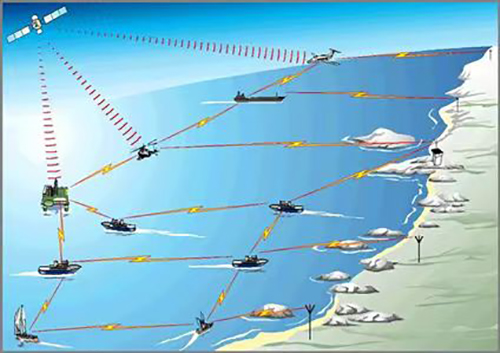
What is AIS
Overview
Components of AIS
AIS consists of shore-based communication station and marine communication and navigation equipment. The shore-based infrastructure is a network composed of a series of shore stations covering the coastline to monitor vessels entering the jurisdictional waters of the system, establish communication with ship’s marine equipment, and exchange vessel and waterway information. marine communication and navigation equipment consists of transceivers, receivers, information processors, display devices, and other external interfaces. In addition to exchanging information with shore stations, shipborne equipment can autonomously broadcast and receive vessel static, dynamic, voyage-related data, and safety-related messages.

Main functions of AIS
AIS can achieve vessel identification, monitoring, navigation, and communication between vessels and shore stations.
Between vessels: AIS actively identifies nearby vessels, retrieves important data such as vessels’ position, motion parameters, and navigation status, and adjusts proactively to avoid collision with them.
Between vessel and shore: AIS enables data exchange between vessels and shore-based stations, allowing maritime authorities to monitor and manage all vessels equipped with AIS in their jurisdictional waters, improving the efficiency of safety management in the area and the capability of maritime search and rescue.
SOLAS requirements for AIS equipment
SOLAS Chapter V, Regulation 2.4 stipulates that the following vessels must be equipped with AIS and keep its operation at all times:
International voyaging vessels of 300 gross ton and above
Non-international voyaging vessels of 500 gross ton and above
All passenger ships regardless of size
(Note: This regulation does not include vessels required to protect navigation information according to international agreements, rules, or standards)
Classification of AIS
AIS is classified into Class A and Class B. International voyaging vessels of 300 gross tonnage and above, non-international voyaging vessels of 500 gross tonnage and above, and passenger ships should be equipped with Class A AIS; coastal voyaging vessels ranging from 200 to 500 gross tonnage, harbor towage vessels, and self-propelled vessels involved in coastal surface and underwater construction operations should be equipped with Class A or Class B AIS.





